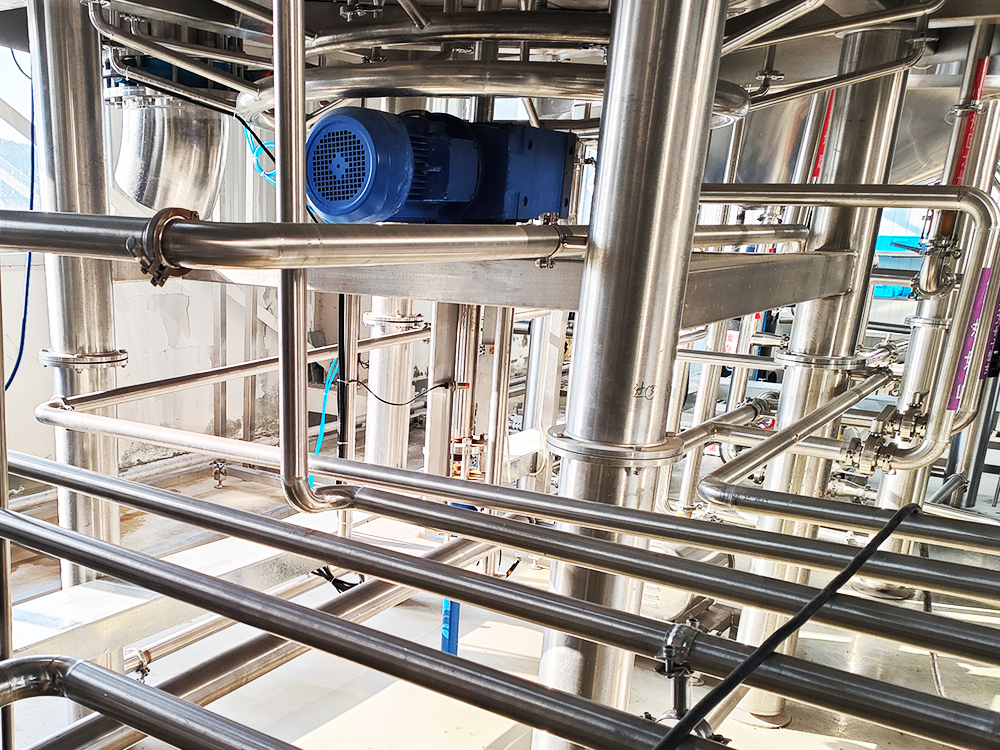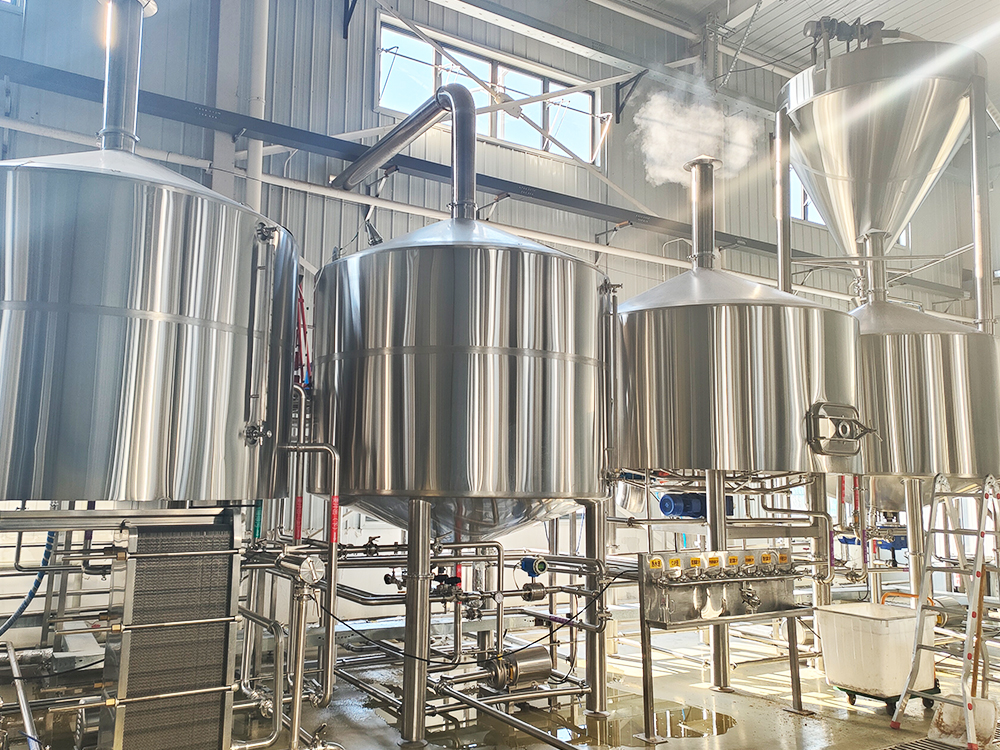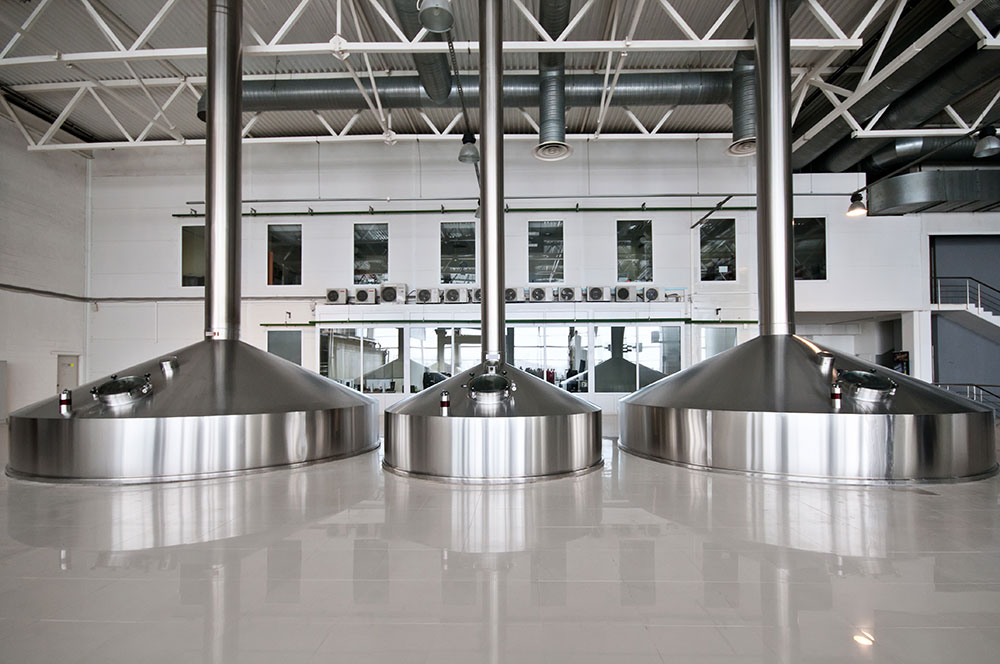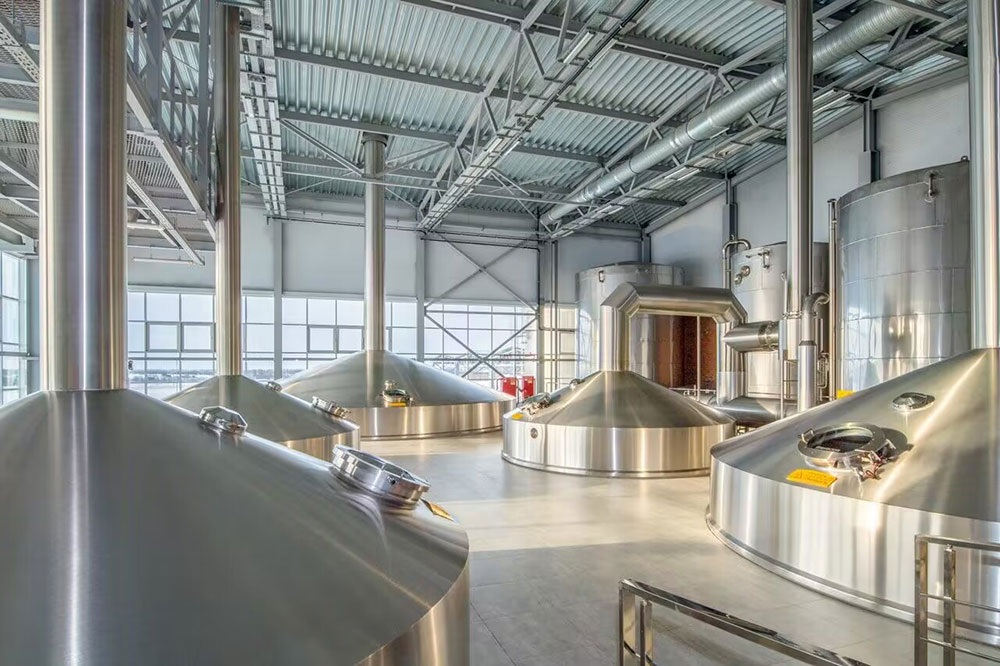Beer brewing equipment piping design and installation
Modern beer production is an industry composed of a variety of biochemical units, and pipelines are an indispensable part of the production process. Various materials, steam, water, gas, etc. are transported by pipelines. The interconnection between equipment It is maintained by pipelines. Therefore, pipelines are as important to beer production as blood vessels in the human body. Pipeline design and layout is one of the main contents in the design stage of factory construction drawings. The process design of the brewery is mainly based on the workshop process design, while also taking into account the design and layout of the factory area. Whether the pipeline design and layout is reasonable is not only directly related to the advancement and rationality of the construction indicators, but also to whether the production process can proceed normally and smoothly, and to the accessibility, neatness, aesthetics, ventilation, and lighting of the factory and workshop layout. question. However, the brewery’s piping setup is also the most labor-intensive and time-consuming design during the construction phase.
Design and layout of workshop piping
(1) Tasks assigned by the workshop
The task of workshop piping design and layout is to use pipelines to connect the equipment that has been fixed in the workshop layout. To form a complete and coherent production process. It is necessary to determine the position of the nozzle of each equipment and the specific location of each pipe section (including valves, pipe fittings and instruments) in space, as well as their installation, connection and support methods.
When designing and laying out pipes in the workshop, the requirements and principles of pipeline installation must be considered, and certain special technical (such as toxicity, corrosivity, microbial hygiene, etc.) requirements must be considered and met. The main basis for pipeline design and layout is the process flow chart with control points, construction layout drawings, civil engineering drawings and relevant piping specifications.


(2) Principles of workshop piping design and layout
1. The design and layout of pipelines not only affects the neatness and beauty of the factory workshop, but also affects the process operation. Unqualified product quality leads to contamination by miscellaneous bacteria or phages, which will have a certain impact on installation and maintenance. Therefore, the pipeline layout should first meet the production needs and process requirements, and facilitate installation, maintenance and operation management.
2. Keep the connected pipelines as short as possible and the valves as few as possible. Avoid unreasonable arrangements such as pipes moving back and forth on the plane, bending and twisting on the elevation.
3. The pipelines in the workshop are generally laid with open wires (different from residential buildings). The installation cost is low, maintenance and installation are convenient, and the operators can easily master the arrangement and operation of the pipelines.
4. The layout of process pipelines in the workshop generally adopts the installation method in rows along the wall, floor bottom or pillar, so that the pipelines run parallel and straight in rows, and the elevation and plane coordinate position of each pipeline are coordinated to ensure
Strive to share the installation to make it occupy less space. Minimize turns as much as possible, avoid blocking light and opening and closing doors and windows, and take appropriate care of the appearance.
5. The elevation of the pipe rack should not affect vehicle and pedestrian traffic. The height of the bottom of the pipe or the bottom of the pipe rack beam from the driving road surface should be ≥ 4.5m; the sidewalk should be ≥ 2.2m; the minimum clearance height of the workshop secondary channel is 2m; the clearance of the channel under the pipe gallery should be ≥ 3.2m, if there is a pump, it should be ≥4m.
6. When arranged in layers, large diameter pipes, hot medium pipes, gas pipes, insulation pipes and non-corrosive pipes are on the top; small diameter pipes, liquids, non-insulation, cold medium and corrosive medium pipes are on the bottom. When branching the pipe, the gas pipe is led from the top and the liquid pipe is led from the bottom. For special circumstances, design according to requirements (such as fermentation tank refrigerant pipes with low entrance and high elevation).
7. Pipes with large diameters, normal temperature, few branch pipes, infrequent maintenance and non-corrosive media should be placed against the wall; pipes with small diameters, thermal pipes, frequently maintained branch pipes and pipes with corrosive media should be placed outside. .
8. When pipes pass through floors or walls, holes (or fixed sleeves) should be left in advance; for pipes that pass through floors or walls, their flanges or welding joints must not be located in the floors or walls.
9. For pipelines that are easily blocked, connect a water pipe or compressed air pipe in front of the valve, or appropriately change the pipe diameter or reduce the bend, or add a valve close to the equipment outlet, or the pump inlet is close to the equipment outlet, etc.
10. Pipes should avoid passing over motors or switchboards, or near both.
11. The flange of the pipeline transporting corrosive media must not be located above the channel; when juxtaposed with other media pipelines, it should be kept at a certain distance and slightly lower.
12. The installation height of valves and local instruments should meet the convenience of operation and inspection. If the valve position is too high, the valve stem can be lengthened so that the switch handwheel or handle is in a suitable position for operation.
13. The direction of outdoor overhead pipelines should be parallel to the main roads and buildings in the factory area.
14. Stainless steel pipes must not be in direct contact with carbon steel brackets or pipe brackets for a long time to avoid the formation of corrosion core (electrochemical corrosion). The pipe support must be painted or insulated or lined with stainless steel plates for isolation.
15. Choose the correct pipe connection. Except that the upper and lower water pipes can be connected with threads, the other pipes are preferably welded and flanged.
16. General water pipes and wastewater pipes are suitable for underground laying. The installation depth of buried pipes should be below the freezing line.
18. Eliminate dead corners in the pipeline. The so-called dead corners refer to the sterilization temperature that due to some reasons during sterilization
(sterilization effect) cannot be achieved or is difficult to reach local locations.
(1) Dead ends of pipeline connections
(2) The dead corner of the feeding pipe
(3) Dead angle of the exhaust pipe




